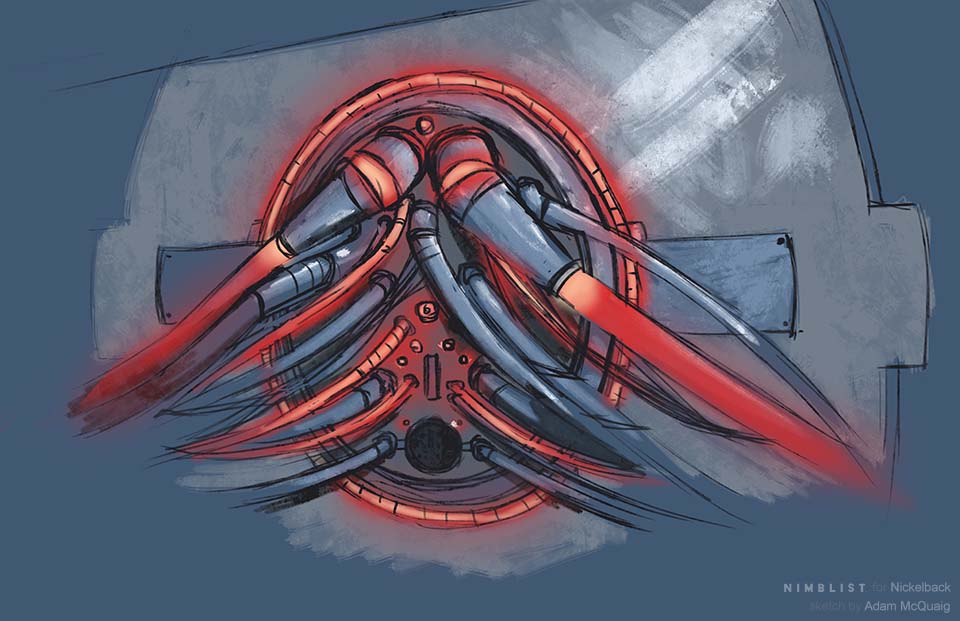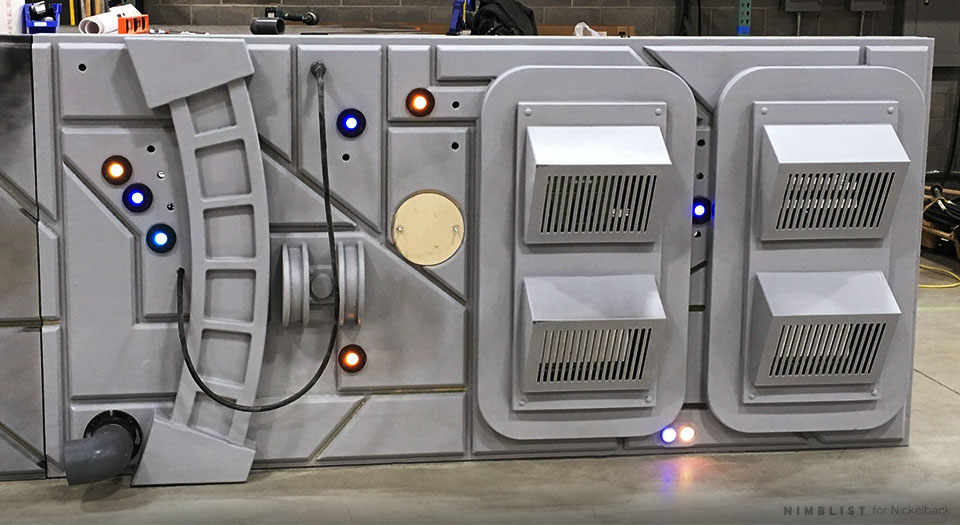FEED THE MACHINE

Matrix Chaos
For their 2017 album Feed the Machine and companion tour, Nickelback wanted to push the idea of an all controlling, oppressive machine. This concept initially came to light in their music video and album cover by the same name. For the tour, Nimblist© was contracted to provide production design.
The task was to take one of our existing Nickelback designs, and modify it to suite the new aesthetic. This included lighting, scenic, and staging changes. Rather than flat video panels, the band wanted a physical, 3D fascia on the catwalk and drum riser.
Final Product

Concept
Our art director David Lasky put together a mood board based on the band's notes. This served as a guide post through the project. The style was very clear, and tied in well with our skills.
The process then followed with concept sketches by our sketch artist, Adam McQuaig. He did several versions so we could get a feel for the scale, and how to position it within the stage. Once a version was selected, it got passed off to me.
Detail
My job was to interpret Adam's concept sketches, and make a detailed scenic model that would be fabricated and attached to the up stage catwalk and drum riser. It would be fully 3D, with integrated lighting elements, and lots of hoses.
I started by doing some of my own sketches to work out details and composition. These were then translated into a blocking 3D model. From there I used my kit of greebles and nurnies to add several layers of matrix like machinery to every part.
I used a combination of Blender and Cinema 4D to model and render it. The design was then adjusted to house the lighting elements, and breaks were inserted so it could be transported in sections. I was responsible for the final design, scenic lighting design/patching, and working with our scenic vendor Atomic to ensure the artistic integrity could be maintained, and find a happy medium with the technical and logistical requirements.
Breakdown of model

Fabrication
In order for the Atomic guys to quickly get their head around everything, I created a detailed breakout document, carefully showing each part and where it went. We also provided the full 3D model and an animation showing all the layers and their pieces. Atomic then made their own cad models for their CNC machines.
Fabrication was done mostly out of hard foam, coated with epoxy. This was attached to wood boards held in place by aluminum framework that attached to the risers. Holes were cut for LED lights. Because we had a limited number of dmx-to-rgb controllers, I made a circuit map showing how all the lights were to be wired. The finishing touches were applied by Atomic's scenic painters, who really made it come to life.
Foam Paneling










